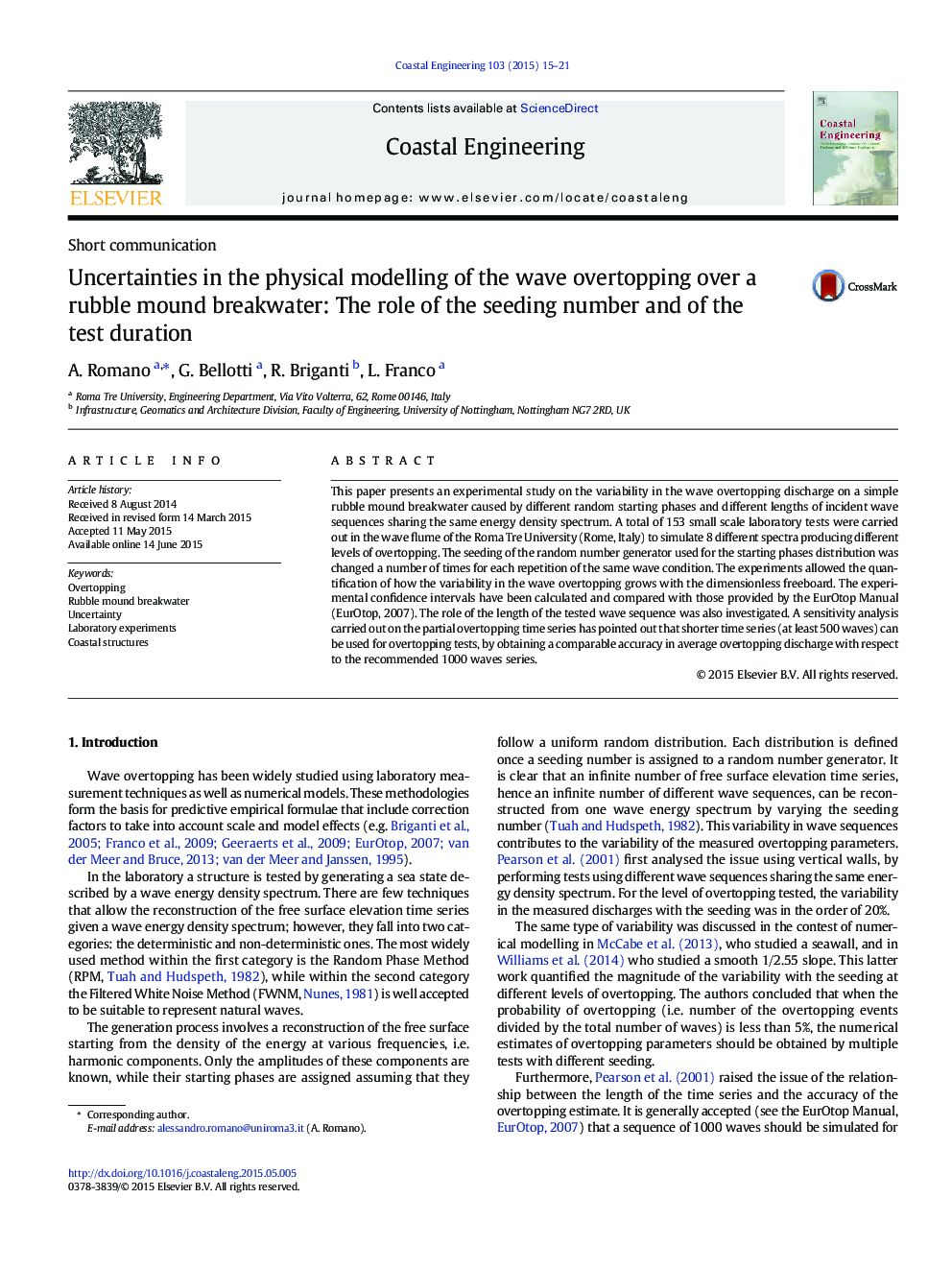| Article ID | Journal | Published Year | Pages | File Type |
|---|---|---|---|---|
| 8059779 | Coastal Engineering | 2015 | 7 Pages |
Abstract
This paper presents an experimental study on the variability in the wave overtopping discharge on a simple rubble mound breakwater caused by different random starting phases and different lengths of incident wave sequences sharing the same energy density spectrum. A total of 153 small scale laboratory tests were carried out in the wave flume of the Roma Tre University (Rome, Italy) to simulate 8 different spectra producing different levels of overtopping. The seeding of the random number generator used for the starting phases distribution was changed a number of times for each repetition of the same wave condition. The experiments allowed the quantification of how the variability in the wave overtopping grows with the dimensionless freeboard. The experimental confidence intervals have been calculated and compared with those provided by the EurOtop Manual (EurOtop, 2007). The role of the length of the tested wave sequence was also investigated. A sensitivity analysis carried out on the partial overtopping time series has pointed out that shorter time series (at least 500 waves) can be used for overtopping tests, by obtaining a comparable accuracy in average overtopping discharge with respect to the recommended 1000 waves series.
Related Topics
Physical Sciences and Engineering
Engineering
Ocean Engineering
Authors
A. Romano, G. Bellotti, R. Briganti, L. Franco,
